Ready to dig into the delicious world of organic gardening? First, find a sunny spot that sings with at least six hours of sunlight daily! Then, pick some exciting seeds like heirloom tomatoes or spirited peppers! Prepare your soil, giving it a nutrient-packed hug with compost, and let it breathe! Don’t forget to keep your garden hydrated with drip irrigation, and protect it naturally from pesky weeds! Want to uncover more tips and tricks? Stick around for a flourishing journey!
Choosing the Right Location for Your Garden
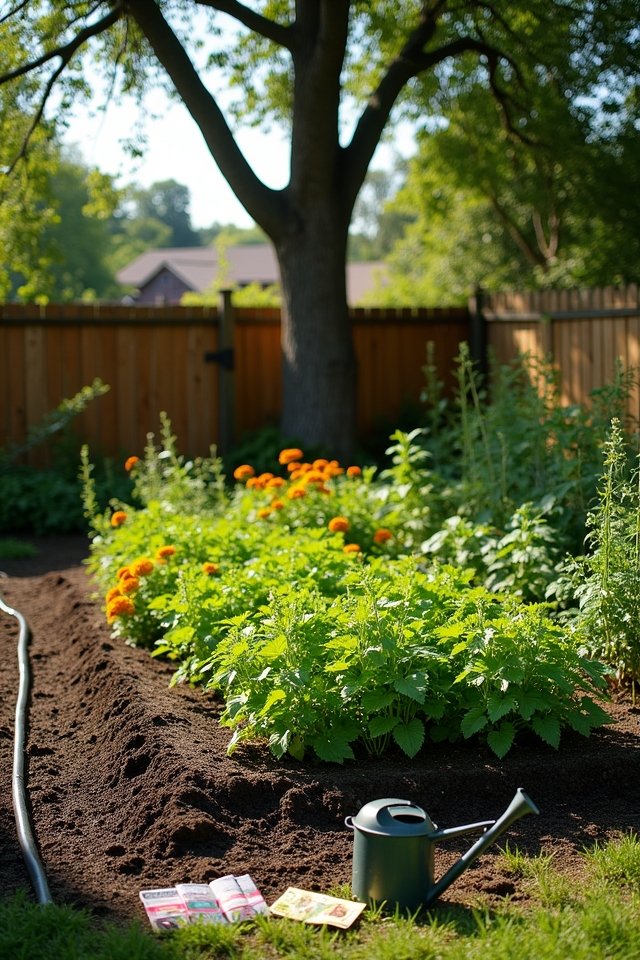
When you’re setting up your organic vegetable garden, choosing the right location can make all the difference! Envision this: plants basking in sunshine like kids at the beach! Aim for at least six hours of sunlight exposure daily. But don’t just forget about drainage considerations— soggy roots are like bad dates, they’ll ruin everything! Find a spot where water doesn’t pool after rain; a slight slope can work wonders. If your soil drains well, your veggies will thrive like they’re on vacation! Think about your backyard’s layout, too. Create a delightful design that invites both pollinators and you! So, grab your thinking cap and explore your outdoor canvas. That perfect location is just waiting to be discovered!
Selecting Organic Seeds and Seedlings
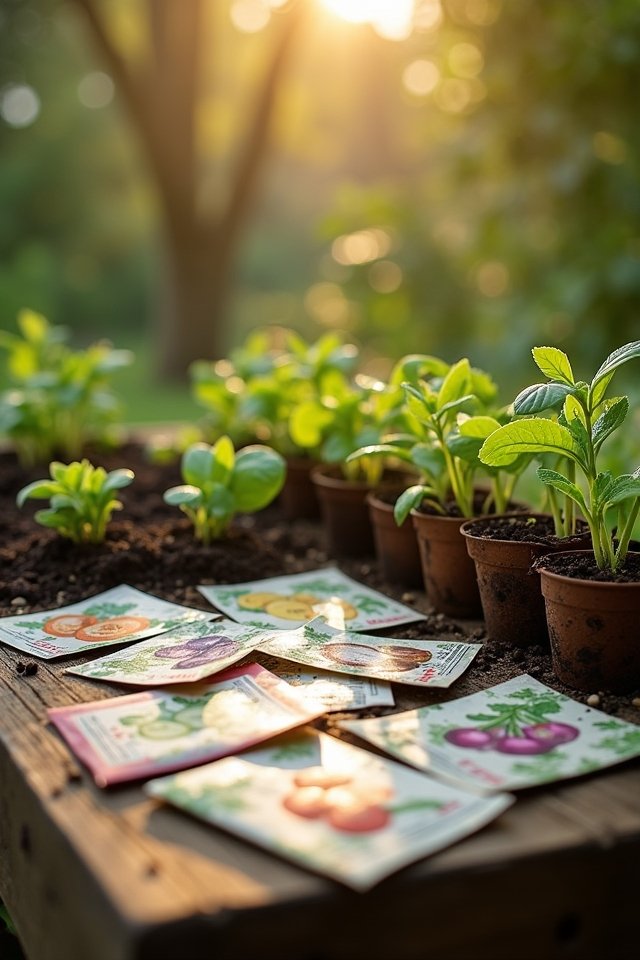
How do you choose the best organic seeds and seedlings for your garden? Start by exploring exciting seed varieties! Think heirloom tomatoes bursting with flavor or vibrant peppers that’ll make your taste buds dance. Don’t underestimate the power of selecting seedlings; they give you a head start!
Research innovative planting techniques, too! Try spacing your plants closer—it’s like a party in your garden where everyone thrives together. You can also interplant for pest control; it’s nature’s way of keeping your veggies safe!
Visit your local garden center or trusted online retailers, and ask questions. The vibrant colors, earthy scents—it’s like a wonderland of possibilities! So, get your hands dirty and select the best options for your organic journey!
Preparing the Soil for Planting
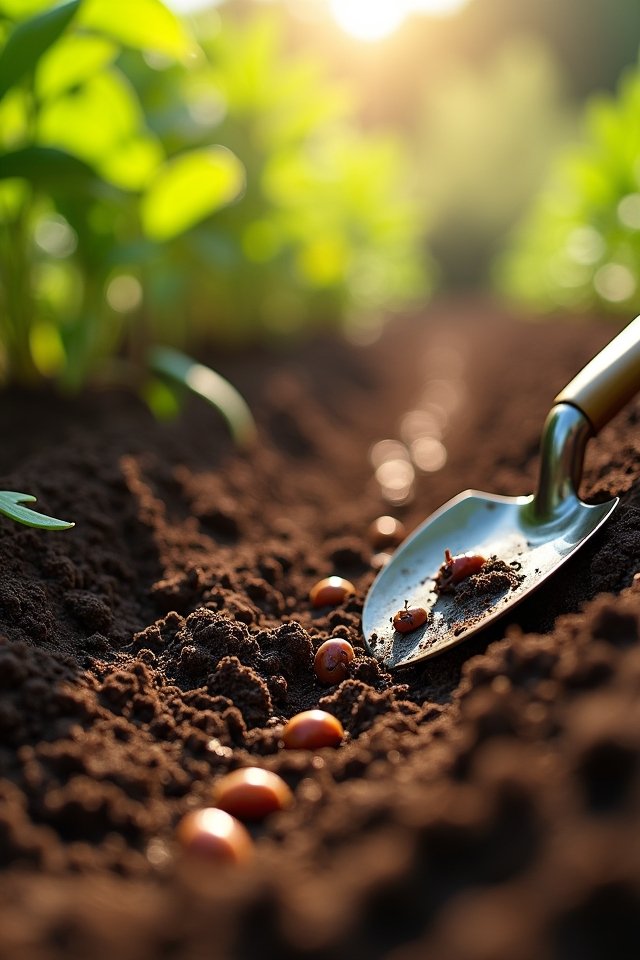
After selecting your fabulous organic seeds and seedlings, the fun doesn’t stop there! It’s time to roll up your sleeves and prepare that soil. First, grab a soil testing kit; it’s like a health check-up for your garden! This little tool reveals essential nutrients, allowing you to balance out what your plants need. Think of it as a tasty recipe—too much salt ruins the dish, right? Amend your soil with compost or well-rotted manure to boost the nutrient levels. You want nutrient-rich, fluffy soil that crumbles like a warm cookie! So dig deep, turning that earth over to introduce air—your plants will thank you later! Ready to create the perfect environment? Let’s dig in and get started!
Implementing Sustainable Watering Practices
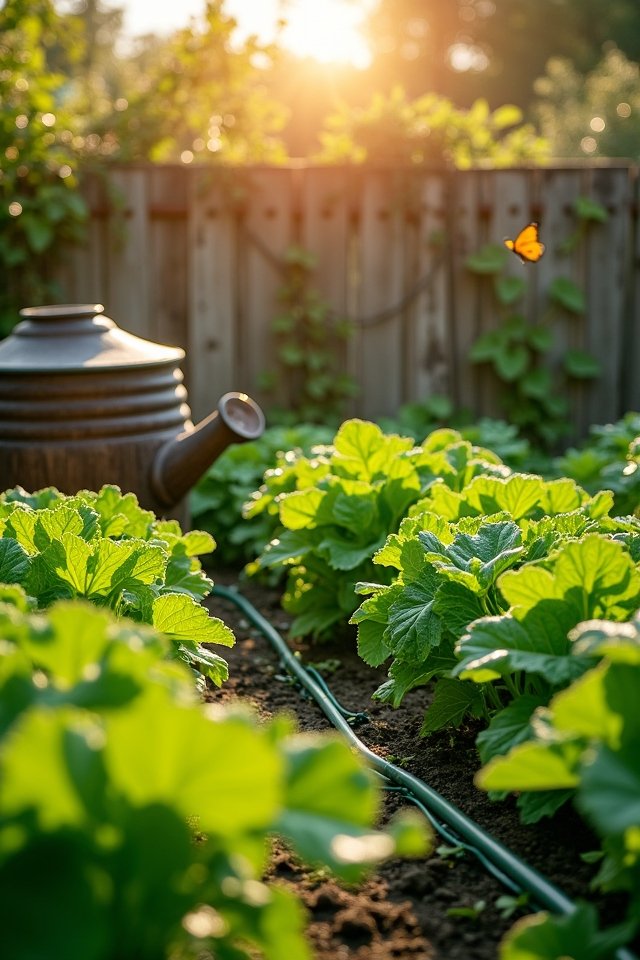
While crafting your flourishing vegetable garden, embracing sustainable watering practices is essential to keeping your plants happy and healthy! You don’t want your greens to wilt in the heat, right? Try these innovative methods:
- Drip irrigation: Delivering water directly to plant roots is like giving them a revitalizing drink on a hot day!
- Rainwater harvesting: Collecting rainwater is akin to capturing nature’s gifts in a jar!
- Mulching: This keeps the soil cool and moist, like a cozy blanket for your plants.
- Soaker hoses: These work wonders, like gently hugging your rows of veggies.
- Timing: Watering early or late in the day prevents evaporation, ensuring your garden gets every drop!
Ready to keep your garden thriving? Let’s innovate your watering routine!
Managing Pests and Weeds Organically
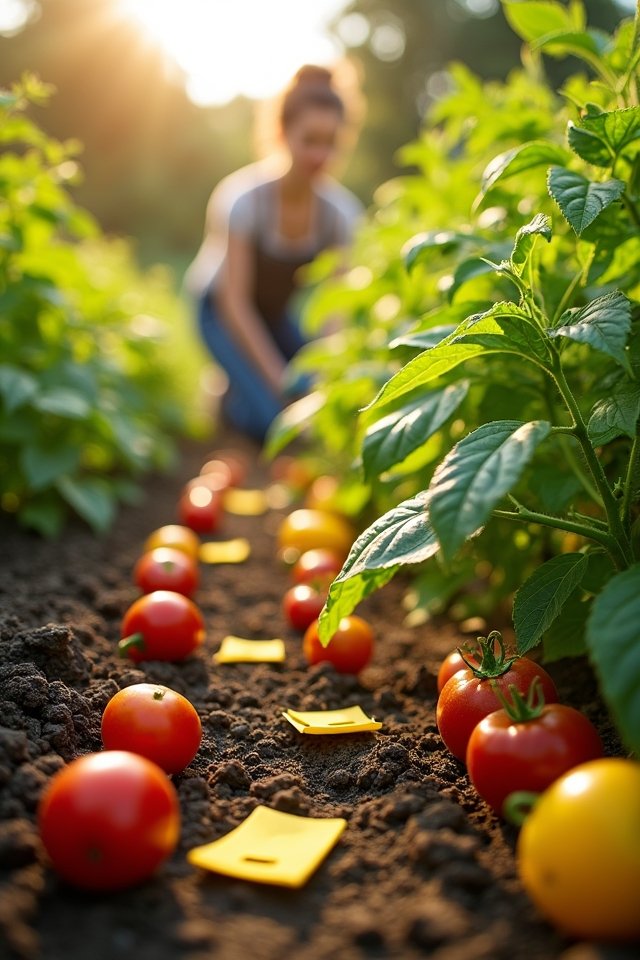
Your garden’s looking fantastic, and those sustainable watering practices are sure to give your plants a revitalizing boost! Now, let’s tackle those pesky pests and weeds the organic way. Ever heard of companion planting? It’s like matchmaking for plants—certain combos naturally deter pests! For example, plant marigolds alongside your tomatoes; their scent confuses those nasty insects.
Using natural deterrents, like neem oil or garlic spray, offers an extra layer of protection without chemical nasties. Imagine swatting away troubles while your veggies thrive! And, don’t forget to regularly pull those invasive weeds; they’re the uninvited guests crashing your garden party. With a little creativity and care, you’ll build a vibrant garden ecosystem that’s as healthy as it is delightful!
Frequently Asked Questions
How Much Sunlight Do Vegetables Need Daily?
Vegetables generally need about 6 to 8 hours of sunlight daily to thrive! Think of sunlight as their morning coffee; it energizes growth and boosts flavor. But don’t forget, some veggies, like leafy greens, can get by with just 4 hours! Check the light duration in your garden’s unique spots. Imagine watching your plants grow strong and vibrant, blooming with color, thanks to just the right amount of sunshine. Isn’t nature amazing?
Can I Grow Vegetables in Containers?
Absolutely, you can grow vegetables in containers! Imagine lush, vibrant tomatoes spilling over the edges or crisp, colorful peppers winking at you. With container gardening, you can experiment with various vegetable varieties, from herbs to beans, even if space is tight. Just make sure they get enough sunlight and water! It’s like creating a mini-farm right on your porch! Who knew urban farming could be this fun? Grab those pots and let your inner gardener shine!
What Tools Do I Need to Start Gardening?
Starting your gardening adventure? You’ll need some key tools! Grab a sturdy trowel, it’s like a magic wand for soil preparation! A watering can is essential too; think of it as your plants’ lifeline. Don’t forget gloves – they keep your hands clean and protected, like superhero armor. A rake and some sturdy pots complete your gardening essentials. With these trusty tools, you’re set to release your green thumb! Ready to dig in?
How Often Should I Fertilize My Plants?
Fertilizing your plants is like giving them a delicious meal—feed them too little, and they might go hungry! You should fertilize about every 4 to 6 weeks. Explore organic options like compost or fish emulsion for a nutrient boost. Different fertilizer types offer varied benefits; it’s all about what your plants crave! Just remember, balance is key! Are you nurturing your leafy friends with the care they deserve? They’ll thank you with vibrant growth!
When Is the Best Time to Harvest My Vegetables?
The best time to harvest your veggies is when they’re perfectly ripe! Keep an eye on their size, color, and feel—think tender strawberries or plump tomatoes. Each vegetable has its own maturity magic. For instance, cucumbers are best when they’re about 6-8 inches long, nice and firm. Harvesting too late? Your veggies could become bitter, like a soggy cereal! So, trust your instincts and enjoy the delicious results of your hard work!


